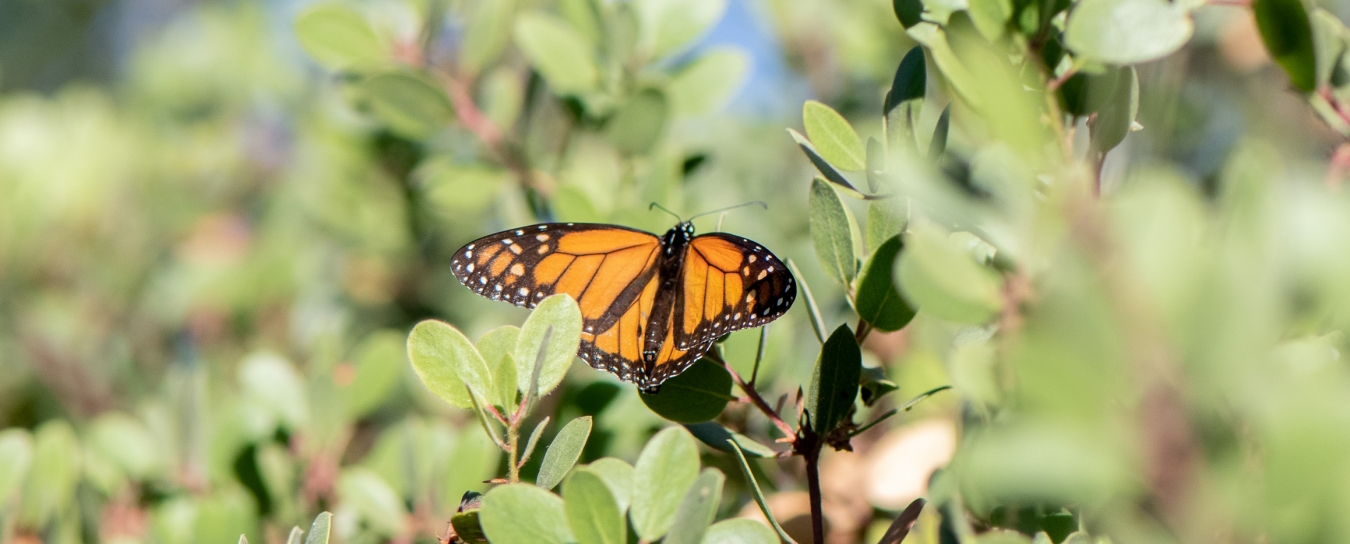
Invertebrates
See our handy guide to critters found in local homes and our Central Coast Butterfly FAQ. Browse the insects and other terrestrial arthropods we’ve identified. Check out local marine invertebrates, particularly bivalve mollusks and intertidal organisms.
- Anthropology
- Rocks & Fossils
- Invertebrates
- Vertebrates
- Botany
- Astronomy
- Fungi
- General
- Recently Asked
Environmentally kind yard treatment for chiggers?
We have had a severe problem with chiggers in our Cleveland School area yard for decades. Only recently have they been positively identified. For years we were told chiggers were not present in SB and we probably were being eaten alive by fleas. It lovely to live in SB, but not being able to enjoy our yard from May to October is a shame. I am now resolved to fight for my outdoor privileges!
Our small patch of lawn is very short and brown, we do have some perimeter Algerian and English ivy as well as Catalina Cherry shrubs, oleander and juniper bushes. I don’t want to senselessly remove greenery without being sure it will help. The lot is about 1/4 acre with some very steep slopes that require the ivy to hold them.
I have two questions that I’m hoping you can help answer. One - how can I locate where the concentration of the chiggers may be? I seem to get bitten while working in various areas and haven’t pinpointed the nests. Two - I’d like to call a pest control service to spray the entire yard, but since chiggers are apparently rare here, I’m afraid they may not use something targeted and effective, but still safe for bees, small animals, birds, etc. Would you recommend a service or a treatment?
Thanks so much for your time and any suggestions you can share!
Lauren
Curator Response
Hi Lauren,
While I'm not an expert in either chiggers or pest control, I hope I can offer a few tips to get you moving in the right direction.
Firstly, chiggers are a type of mite (which are arachnids) in the family Trombiculidae. The stage that bites humans is the larva, which has only six legs (not eight like the nymph and adult) and is only about 0.2 millimeters long, which means that single individuals are generally not visible with the naked eye. One common misconception is that they burrow into your skin, but this is not true; one scratch and a biting chigger usually falls off the surface of your skin. It's true that chiggers are not very common on the West Coast, but they are distributed in a patchy way in our area. They like humidity and tend to be concentrated in moist, brushy areas during the warmer parts of the year. It's also true that the more "wild space" you have around your yard, the greater chance that chiggers will hang around. They have been known to hang around for a long time after removal of prime habitat, however, so even if you ripped up your ivy and shrubs, this may not completely help.
One good way to check for their presence (I've only heard/read this, never tried it myself!) is to place a small piece of black cardboard edgewise on the ground in an area you suspect is infested. The tiny yellow or pink larvae will run rapidly over the cardboard and concentrate themselves along the upper edge. They tend to form clumps which you can see with the naked eye. Doing this in several different spots might allow you to be more precise in your attempted eradication of these critters, or avoidance of them, since they may not be present all over your yard. You might even find that there is a single source in one small area.
If you don't want to spread or spray anything in your yard, you can use a repellent on your skin and clothing. Powdered sulfur (which you can find at most major garden centers) is supposed to be highly effective at repelling chiggers and other mites. Dry dusting is probably the easiest way to use it on your body, but it can also be wetted and sprayed in your garden or yard, and it is highly targeted against mites and other arachnids, and is also a fungicide (i.e., it will not kill insects or other creatures in any direct, significant way). The downside to using sulfur is that it's messy and smells like...well, sulfur!
Lastly, if you are interested in spraying yourself with a traditional repellent, ones containing the following are most effective against chiggers: diethyl toluamide (this is in "OFF"), ethyl hexanediol (this is in "6-12"), and dimethyl phthalate. Use as directed on the label, which will likely suggest you apply these in particular to your skin and clothing around the ankles, waist and armpits. Chiggers tend to crawl up starting at the ankles, and generally need to be underneath tighter-fitting parts of your clothing in order to gain enough purchase to bite successfully. Once you are finished with your outdoor activities, a thorough lathering of soap and water on your skin is enough to kill and remove any chiggers that happened to climb aboard.
I hope this is helpful.
Best wishes,
Schlinger Chair and Curator of Entomology Matthew Gimmel, Ph.D.


